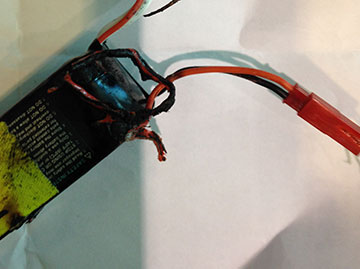The Australian Safety Transport Bureau (ATSB) is urging air passengers to strictly follow government safety advice when travelling with lithium batteries.

This follows an 11 August 2016 incident on a QantasLink Dash8 aircraft prior to departure at Sydney airport.
The flight was fully boarded and loaded when smoke was observed coming from a passenger’s hand luggage while it was in the overhead locker.
With fumes in the cabin, air crew initiated disembarkation procedures and the passenger was escorted to a safe area to isolate the hazard. The remaining passengers, including a wheelchair passenger, were escorted to an evacuation area.
Mobile and other electronic devices such as phones, laptops, watches and cameras containing low power lithium or lithium-ion batteries should be included in carry-on baggage only—not checked-in baggage.
The passenger’s luggage was made safe, the flight was cancelled, and passengers were moved to next service. Fortunately, no one was seriously injured but some passengers suffered side-effects from the smoke.
It was later found that the lithium batteries the passenger was carrying had ignited on board the aircraft. The operator reported that the batteries were not packaged properly (either in their original packaging or packed individually to insulate the terminals) to protect them from short circuiting.
ATSB Chief Commissioner Greg Hood said government authorities worked closely with airlines and the aviation industry to minimise the risk of aviation incidents.
“With the use of mobile devices at an all-time high, the Civil Aviation Safety Authority (CASA) has placed a greater focus on the carriage of personal electronic devices when flying,” Mr Hood said.
“Mobile and other electronic devices such as phones, laptops, watches and cameras containing low power lithium or lithium-ion batteries should be included in carry-on baggage only—not checked-in baggage.
“All spare batteries for these devices should also be placed in carry-on luggage and packaged individually to insulate the terminals to protect them from short-circuiting.
“Incidents are more likely to occur when spare batteries, such as for digital cameras, are not packaged to insulate the terminals, as was the case in this incident.
“The Australian Government has in place regulations designed to ensure the safety of passengers, but it is also everyone's responsibility to declare dangerous items and to ensure electronic devices are not only in good order but packaged according to CASA’s requirements.”
For more information visit CASA’s Advice for air travellers.


